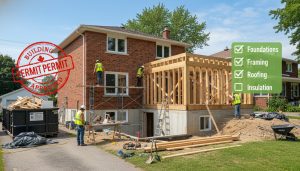How do I assess neighborhood rental demand?
Want tenants lined up before you buy? Here’s the exact playbook to assess neighborhood rental demand — fast, factual, and profit-focused.
Why rental demand matters for Investment & Resale Value
If you want predictable cash flow and strong resale power, neighborhood rental demand is the primary metric. Low vacancy, strong rent growth, and tenant pull mean higher valuation, better yields, and easier exit strategies.
The no-nonsense checklist to measure rental demand
Use this checklist on every target neighborhood. If a location ticks most boxes, it’s worth deeper underwriting.
- Vacancy rate: Look for below-market vacancies. High vacancy = weak demand.
- Rent growth: 3–5%+ annual rent growth shows momentum.
- Rent-to-income ratio: Rents should be <30–35% of median household income.
- Time-on-market for rentals: Faster leasing = stronger demand.
- Employment growth and major employers: New jobs drive tenant influx.
- Transit, walkability, and amenities: Walk Score, transit lines, schools, parks.
- New construction pipeline: Too much new supply can drop rents.
- Tenant type fit: Students, young professionals, families — match unit product.
- Zoning and short-term rental rules: Restrictions affect demand and yield.

Step-by-step method: Data first, then judgment
- Pull local rental comps. Use rental listing sites and local MLS to get current asking rents and recent leased rents. Compare per-bedroom rents and concessions.
- Check vacancy and absorption. Use municipal reports, CMHC (Canada), or local housing authority. A falling vacancy rate is a green flag.
- Analyze rent growth history. Use 3–5 year trend to filter noise. Rapid short-term spikes are riskier than steady growth.
- Map demand drivers. Plot transit stops, employment centers, universities, hospitals, and redevelopment sites within a 1–3 km radius.
- Survey competing stock. Note unit mix, amenities, and pricing. If your product matches an underserved niche (e.g., 2-bed with parking), you win.
- Run a tenancy stress test. Price the unit 5–10% above market and estimate how long it would take to lease. If >60 days, demand is weak.
- Validate with local pros. Talk to property managers, leasing agents, and a market-focused realtor for on-the-ground intel.
Quick metrics to calculate right now
- Gross Rental Yield = (Annual Rent / Purchase Price) x 100
- Vacancy-adjusted Yield = Gross Yield x (1 – Vacancy Rate)
- Rent Growth Rate = (Current Rent / Rent 12 months ago) – 1
Why work with a local expert
You can collect data. But local nuance flips deals. A single zoning change or a new employer can change demand overnight. Tony Sousa specializes in Investment & Resale Value in the area. He combines hard data with local intel to size demand, price for rent, and position properties for resale. Email tony@sousasells.ca or call 416-477-2620 for a neighborhood intake and rental-demand assessment tailored to your investment goals.
Use this method on every deal. Measure, validate, then act. That’s how you convert neighborhood rental demand into steady income and strong resale value.





















